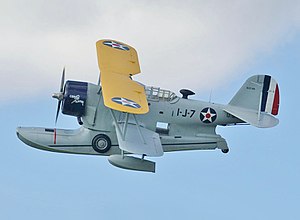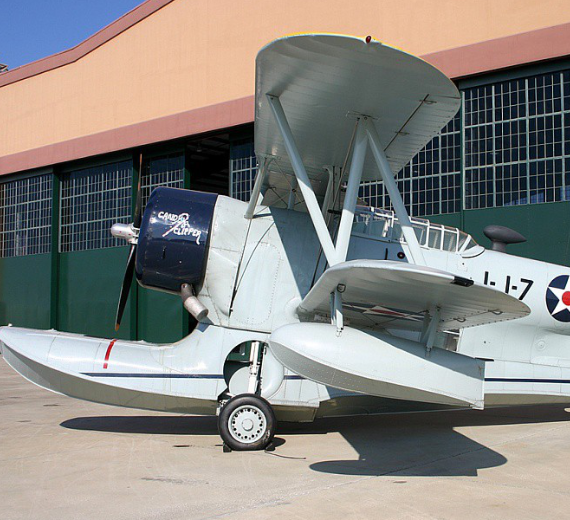 |
|
| Grumman J2F-6 Duck "Candy Clipper" BuNo 33549 / civil reg N1214N | |
| Role | Utility amphibian |
|---|---|
| National origin | United States |
| Manufacturer | Grumman Columbia Aircraft Corp |
| First flight | 2 April 1936 |
| Introduction | 1936 |
| Primary users | United States Navy United States Army Air Forces United States Coast Guard United States Marine Corps |
| Number built | 584 |
| Developed from | Grumman JF Duck |
The J2F-1 Duck first flew on 2 April 1936, powered by a 750 hp (559 kW) Wright R-1820 Cyclone, and was delivered to the U.S. Navy on the same day. The J2F-2 had an uprated Wright Cyclone engine of 790 hp (589 kW). Twenty J2F-3 variants were built in 1939 for use by the Navy as executive transports with plush interiors. Due to pressure of work following the United States entry into the war in 1941, production of the J2F Duck was transferred to the Columbia Aircraft Corp of New York. They produced 330 aircraft for the Navy and U.S. Coast Guard If standard Navy nomenclature practice had been followed, these would have been designated JL-1s, but it was not, and all Columbia-produced airframes were delivered as J2F-6s


Ceiling
Range
Aircraft Speed
Max Crew


The J2F was used by the U.S. Navy, Marines, Army Air Forces, and Coast Guard. Apart from general utility and light transport duties, its missions included mapping, scouting/observation, anti-submarine patrol, air-sea rescue work, photographic surveys, reconnaissance, and target tug.
J2Fs of the utility squadron of US Patrol Wing 10 were destroyed at Mariveles Naval Section Base,.
J2Fs of the utility squadron of US Patrol Wing 10 were destroyed at Mariveles Naval Section Base, Philippines, by a Japanese air raid on 5 January 1942..
